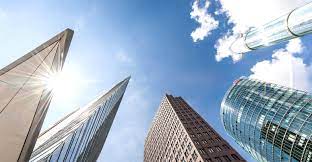Chances are you already know that the sun can damage your skin, thanks to its ultraviolet — or UV — light. Did you also know that it can cause significant damage to buildings as well? Thanks to the UV light and the heat it produces, the sun can damage roofs, walls and other parts of buildings, not to mention the furniture and items found inside it. Here is a closer look at how this damage can happen — and how you can help reduce its impact.
As the sun strikes a building, it heats the materials of which it is constructed. That heat causes those materials to expand, and as they eventually cool, contract. Years of this imperceptible movement can create slow but inevitable long-term damage, depending on the types of materials used in the building and its surrounding climate.
Typically, the roof will sustain the most damage because it is exposed to the sun more directly and more frequently than the walls of a building. You may notice issues such as cracks in the walls, warping of building materials, bleaching of the materials themselves, and blistered surfaces that can be caused by hot air escaping. Darker buildings and roofs tend to absorb more of the sun’s rays and heat up more quickly. They also usually stay warm longer than lighter-colored buildings and roofs.
The sun can also affect other surfaces, such as wooden decking or the wooden frames of a building. UV rays can cause considerable damage to wood fibers, creating a gray or bleached effect; the wood is also more likely to crack or warp from prolonged sun exposure and thus become less resilient.
It is not only the exterior of buildings that are at risk. The sun’s UV rays can also shine through windows and cause damage to drapes, furniture and other possessions — as well as the skin of the people inside the building.
The climate also determines how much UV light a building might have to withstand. Structures in sunny, dry, hot climates — such as those found in the south and southwest — are subject to significantly more sun exposure than buildings in rainier, cloudier areas such as the Pacific Northwest. The drier the air, the more sun damage might occur because there is less moisture between the sun and the buildings themselves.
To learn more about the damaging effects of the sun, check out the accompanying resource.
Graphic created by Reynolds Construction and Commercial Roofing.

Leave a Reply
You must be logged in to post a comment.